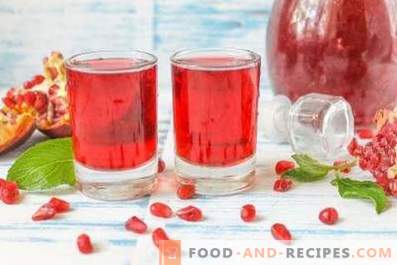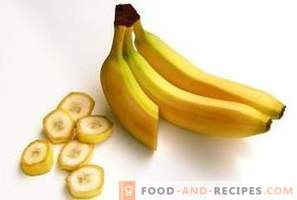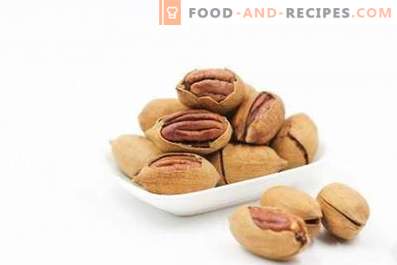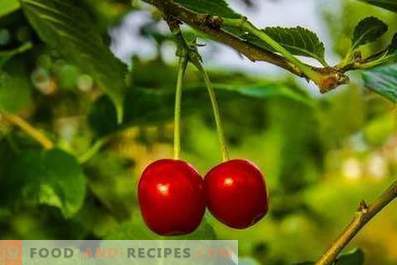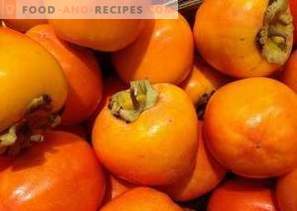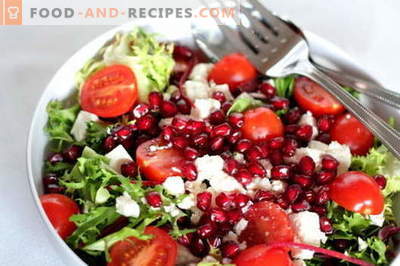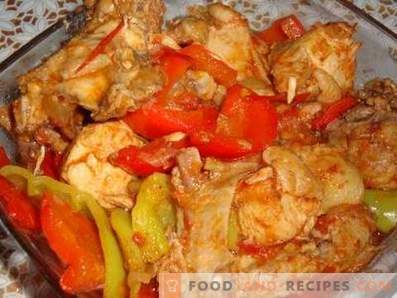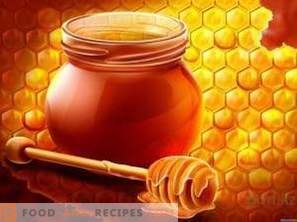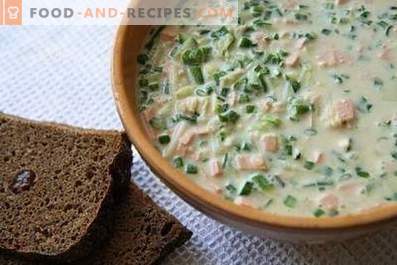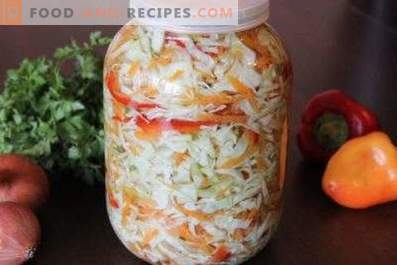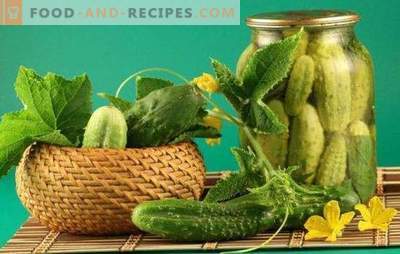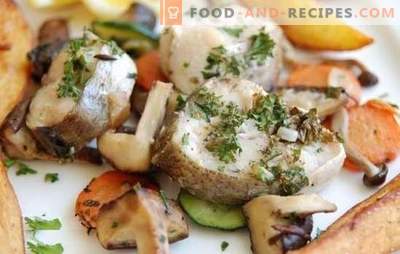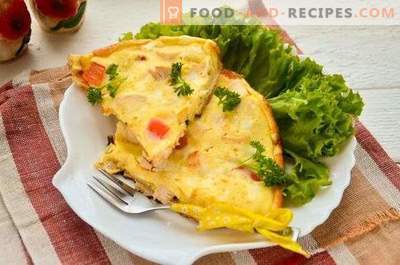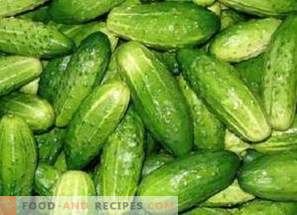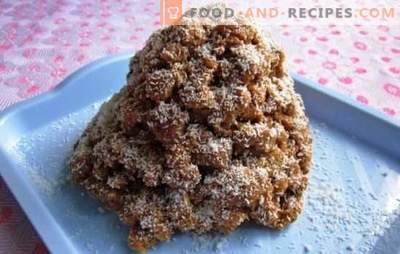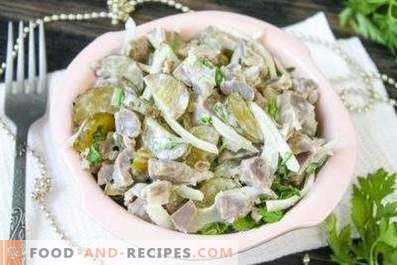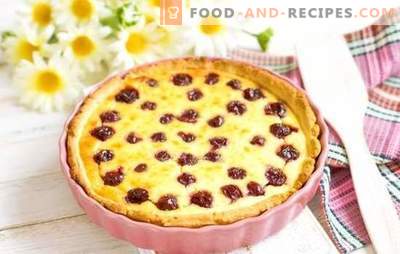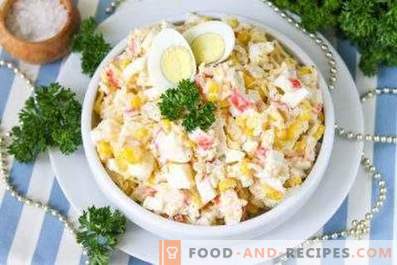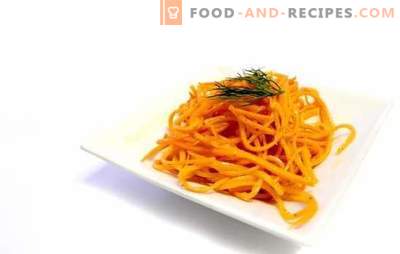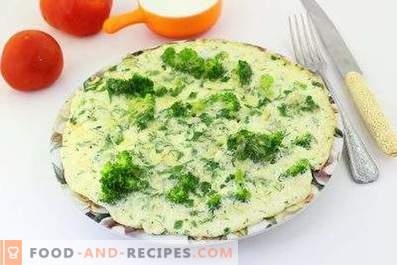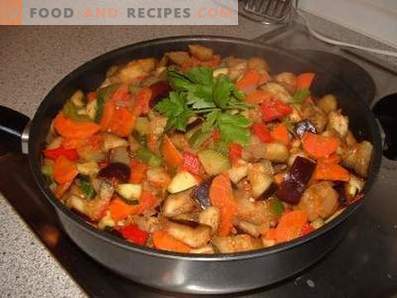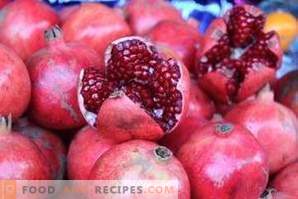
The common pomegranate plant belongs to the genus of grenades of the Derbennikovi family. The Latin name of this genus, Punica, is derived from the word “punicus”, that is, Carthaginian: grenades were and remain a common culture in these territories (currently Tunisia is located there). The name of the species comes from the term “granatus”, meaning “granular”. The inhabitants of ancient Rome called pomegranate grained apple (malum granatum), which is reflected in some of the current names: in German the word “Granatapfel” has the root “apfel”, and the Italian “melograno” is also derived from the root “mela” - apple. In the Middle Ages, the fruit was called the seed apple (Pornum granatum), and only Karl Linney, who developed the biological classification, changed the name to the modern one: Punica granatum.
Pomegranate belongs to long-lived trees, but after 50 years of age, the yield of the plant drops significantly, so instead of old pomegranates, new ones are planted. Red-orange flowers, shaped like bells, are double and single and grow, reaching a radius of 2 cm. On thin prickly branches, elliptical glossy leaves of light green color appear, usually not exceeding 3, 5 cm in length. The tree forms spherical fruits with a lot of juicy seeds and leathery pericarp. The maximum height of the trunk of a pomegranate plant is 5-6 meters. Fruits can be painted in both orange-yellow and brownish-red shades, and in size garnet is very close to an orange. One fruit tree gives 50-60 kg of crop.
Pomegranate bloom is observed from June to autumn cold snaps. The flowers are mostly barren and fall off every season. Fruits form and ripen from 4 to 5 months. This process is extended due to the long flowering period of the pomegranate. Ripening fruits do not change their color, which makes it difficult to determine the time of harvest. Pomegranate fruits bear fruit from 3 years of age, but full-fledged fruiting is possible only for plants from 6-8 to 30-40 years. Fruit ripening most often occurs in mid-autumn (late September - October). Unripe fruits can ripen in maturation, but the beneficial properties of the fruit are noticeably lost. Harvesting is done with shears, for further storage they leave only whole fruits without visible cracks. In nature, the territory of the spread of culture includes East Asia, that is, Turkey, Abkhazia, Uzbekistan, southern Armenia and Georgia, Afghanistan, Southern and Western Turkmenistan. The pomegranate range also affects the northwestern regions of India and the Greater Caucasus Mountains. Eastern Transcaucasia is particularly active in the cultivation of pomegranate. For example, the Azerbaijani forests of this wild fruit occupy an area of several hundred hectares.
The plant develops in a subtropical climate and hardly tolerates a decrease in air temperature to -16 ... -18 ° C. At -25 ° C, the aboveground part of the plant freezes completely. The shade and lack of sun pomegranate also endures poorly: the trees most effectively bear fruit, developing in open areas, but the fruits require a shade of leaves to form.
Soil moisture has less impact than temperature conditions, but it was found that with insufficient moisture on dry soils, the crop is of low quality, so in arid subtropical regions artificial irrigation is used. In the case of a sufficiently abundant supply of the root system with moisture, pomegranate easily tolerates dry air. The plant is able to bear fruit even on saline soils.
A specific feature of the pomegranate tree is the ability to resist sands without being covered. If the stem of the plant introduces sand, then new adventitious roots will appear at this level. Figuratively speaking, the grenade scrambles up, not allowing the sand to fall asleep entirely. The former root system remaining under the rubble dies out over time. In some regions (for example, near the Ganja-Gai river), peculiar pomegranate cemeteries with numerous tiers of buried root systems were found. An important rule of a competent choice of pomegranate is in the external attributes of the fruit: the fruit must be large and shiny, and by weight seem heavy for its size. The peel should be brown at the end and free from damage. In order to preserve the fruits, it is necessary to keep them whole in a freezer bag at a temperature of -5 ... -10 ° C. Fresh pomegranate juice retains its properties for only 2-3 days.
Peeling pomegranate is done in a somewhat unusual way. The top needs to be cut off, and the peel is cut as if on slices. The fruit is immersed in cold water for 5-7 minutes. Then the fruit is broken into pieces, without taking it out of the water (to avoid splashes). Pomegranate seeds will be on the bottom, and their pelts will float.
Nutritional and vitamin value of pomegranate
The pulp of numerous grains of fruit contains B vitamins, fiber and ascorbic acid. Juice contains up to 10% of valuable organic acids (malic, citric, boric, tartaric).
Nutritional value 100 g pomegranate:
- 0, 74 g of proteins
- 0, 61 g of fat
- 14, 52 g of carbohydrates
- 0, 93 g of dietary fiber
- 81, 5 g of water
- 1, 82 g of organic acids
- 0, 12 g of unsaturated fatty acids
- 0, 12 g of saturated fatty acids
- 14, 54 g of monosaccharides and disaccharides
- 0, 52 g of ash
Vitamins per 100 g of pomegranate:
- 034 mg of beta-carotene (vitamin A provitamin)
- 5, 2 μg of retinol equivalent (A)
- 4, 05 mg of ascorbic acid (C)
- 0, 043 mg of thiamine (B1)
- 0, 012 mg of riboflavin (B2)
- 0, 52 mg of pantothenic acid (B5)
- 0, 53 mg of pyridoxine (B6)
- 18 μg of folic acid (B9)
- 0, 51 mg of niacin equivalent (PP)
- 0, 43 mg of vitamin PP
- 0, 44 mg of tocopherol (E)
Calories of fruits and pomegranate juice
Pomegranate is very nutritious and belongs to fruits of average caloric content due to the high concentration of monosaccharides (in pomegranate juice there is from 9 to 20% fructose and glucose).
- 100 g of pomegranate contain 72 kcal.
- Pomegranate of medium size (200 g) contains 144 kcal.
- The caloric value of 100 g of fruit juice is 32 kcal.
Numerically, the energy value of whole fruit is 2 times greater than that of pomegranate juice. The drink contains up to 20% sugars and organic acids (citric, malic). The nutritional value of fresh juice is as great as in the fruit. However, during conservation, the amount of useful components of the product is reduced, which is aggravated by long storage.
Mineral composition of pomegranate
Pomegranate contains a lot of such necessary for the development of the body of elements such as phosphorus, calcium, magnesium, iron, iodine, sodium and manganese. The combination of these components contributes to the normalization of metabolic processes, tissue renewal, strengthening of bones and teeth.
Macroelements in 100 g of pomegranate:
- 10, 04 mg of calcium (Ca)
- 150, 02 mg of potassium (K)
- 2, 03 mg of magnesium (Mg)
- 8, 05 mg of phosphorus (P)
- 2, 03 mg of sodium (Na)
Trace elements per 100 g of pomegranate:
- 1, 04 mg of iron (Fe)
Useful Properties of Pomegranate
- Fruit is known for its ability to quench thirst and induce healthy appetite. The color of the fruit is reminiscent of its benefits for blood formation processes: the formation of red blood cells, the production of hemoglobin. Eating a fruit has a stimulating effect. Children, often feeding on grenades, are usually full of strength and quick to think.
- Pomegranate is an effective means of strengthening the immune and nervous system. The use of fruit helps to make the walls of blood vessels flexible and strong. It is often recommended for patients after surgery and the elderly.
- People suffering from hypertension appreciate pomegranate for its ability to lower blood pressure with regular use.
- Juice, like fruit pulp, is very useful for the circulatory system. The drink stabilizes the work of the heart, liver and kidneys, normalizes pressure. Studies have confirmed that estrogens in pomegranate alleviate the symptoms of menopause and relieve depression.
- There are 15 amino acids in pomegranate juice, 6 of which are found only in meat food. This makes pomegranate a necessary part of the diet of vegetarians who lack animal protein. Amino acids are important to all, regardless of food preferences. This vital component is absorbed into the blood for further protein synthesis. The amino acid sequence forms the building material for the body. Timely replenishment of protein reserves contributes to the renewal of cells, blood, as well as effective metabolism and protection against diseases.
- Ascorbic acid in pomegranate juice helps with vitamin deficiency, scurvy, atherosclerosis, migraine and digestive disorders.
- The juice of this fruit is used during colds, acute respiratory infections, fever, sore throat and cough. Components of the drink actively fight inflammation. Diluted juice is used for gargling. It also helps with asthma, malaria and anemia. If they try to give a remedy to small children, then at first they are fed with 1 spoon of twice-diluted juice and wait 2-3 days to find out if they have an allergy.
- For diabetics, pomegranate juice will be useful in reducing blood sugar levels. To achieve the effect, you must take 60 drops of juice before meals. The effect of pomegranate juice is confirmed by test results after 3-5 days of drinking.
- Infusion of flowers and fruits from ancient times is used as a styptic.
- A decoction of the rind of fruits and flowers, like pomegranate juice, can be used for gargling in the fight against inflammation.
- The rind is a remedy for stomach disorders and produces a fixative effect. You need to pour 5 g of bark with half a glass of boiling water, insist for 20-25 minutes and strain it thoroughly. The dose for taking the funds - 1 teaspoon 3-4 times a day.
- There are several alkaloids in the peel: Pelterin, Isopartherin, and Methylispelterin. These compounds effectively fight worms. Peel in the form of a decoction also helps with inflammation of the liver, joints, eyes and ears.
- Dried and ground to a state of powder, the peel is roasted with butter and used as a mask to treat oily skin, acne, rashes and burns.
- There are white lintels between the pomegranate grain sectors. In the dried form, they are added to tea, and they have a calming effect, relieve anxiety and treat insomnia.
- Pomegranate bones accelerate the removal of harmful substances, and vitamins E and F in their composition prevent cancer and rejuvenate the body. From seeds receive valuable and healthy pomegranate oil.
Contraindications to the use of pomegranate
Pomegranate fruits and their juice are acidic, not only in taste, but also in chemical composition. A large concentration of organic acids can harm the body in some diseases. It is important to remember the following precautions:
- For ulcers, gastritis and increased acidity of the stomach, you can take pomegranate juice only diluted.
- Dental problems can be exacerbated by the use of undiluted juice. It is advisable to brush your teeth after taking this drink.
- For constipation and hemorrhoids, pomegranate can harm its binding effect.
- Children under 1 year old should not drink pomegranate juice, as it can cause allergies.
- The rind of the fruit contains almost 0.5% of poisonous alkaloids.
- In the pomegranate cortex there are toxic substances, overdosing of which increases pressure causes weakness. Care should be taken when applying decoctions of bark. If you suspect poisoning, you should immediately consult a doctor.
